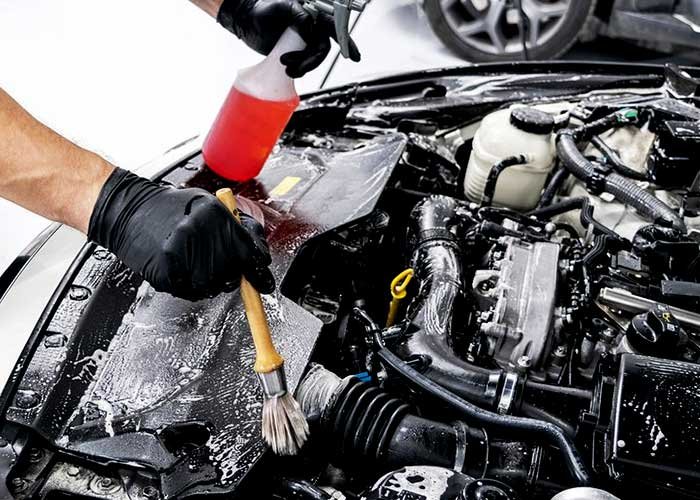
Trip Wash
Engine Degreasing Guide Services
Engine degreasing is a critical maintenance task that helps ensure the longevity and performance of your vehicle. A clean engine runs cooler, is easier to work on, and can help you spot potential problems before they become major issues. One effective method for engine degreasing is the “Trip Wash” technique, which combines the use of a degreaser and a controlled wash process to remove built-up grime and grease. Here’s a step-by-step guide to using the Trip Wash method for engine degreasing.
Preparation
Before starting the degreasing process, ensure the engine is cool to avoid burns and prevent damage to components. Park your vehicle in a well-ventilated area, ideally on a surface where water runoff won’t cause environmental harm. Gather all necessary materials, including a quality engine degreaser, a plastic bag or aluminum foil, a brush, a hose or pressure washer, and safety gear like gloves and safety glasses
Protect Sensitive Components
To prevent water damage, cover sensitive parts of the engine with plastic bags or aluminum foil. These include the battery, alternator, air intake, and any exposed electrical connections. Ensuring these components are protected will help avoid electrical issues and other complications.
Apply the Degreaser
Choose a high-quality engine degreaser suitable for your engine type. Spray the degreaser generously over the engine, focusing on areas with the most grease and grime build-up. Allow the degreaser to sit for the time recommended by the manufacturer, usually around 10-15 minutes. This waiting period lets the degreaser break down the grease and dirt effectively.
Scrub the Engine
Using a brush with stiff bristles, scrub the engine thoroughly. Pay extra attention to heavily soiled areas and hard-to-reach spots. The agitation from scrubbing helps to dislodge stubborn grime that the degreaser has loosened.
Trip Wash - Rinse the Engine
The “Trip Wash” part involves using a controlled water wash to rinse away the degreaser and grime. A garden hose with a gentle spray nozzle is ideal for this purpose. Avoid high-pressure settings, as they can force water into electrical components or dislodge small parts. Rinse the engine from top to bottom, ensuring all degreaser residue is washed away.
Dry and Inspect
After rinsing, let the engine air dry or use a clean microfiber cloth to wipe it down. Once the engine is dry, remove the protective covers from the sensitive components. Start the engine and let it run for a few minutes to help evaporate any remaining moisture. Finally, inspect the engine to ensure it’s clean and there are no lingering issues.
